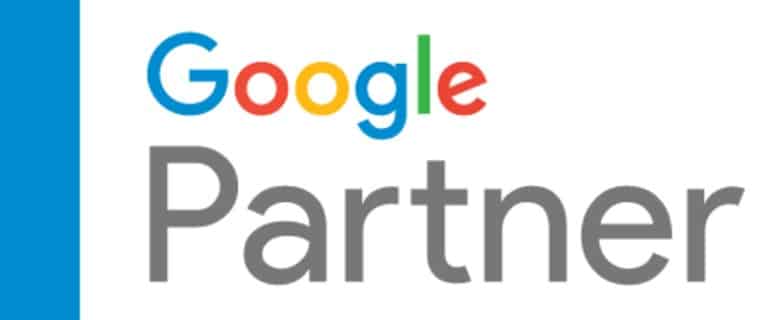How To Invest Your Time In The Right Social Media Channel For Your Business
It’s no secret that social media marketing can be one of the most effective and authentic digital marketing tools. Social media makes it possible to connect with your audience and build a relationship through a variety of different strategies. But you may be wondering: how do I choose the right social media channels for my business? Should I be utilizing all of them?
Not every social media channel is going to be a fit for what your business does or offers. Each channel provides a unique experience with a different audience that utilizes that platform for different reasons.
Let’s face facts. The goal of social media is ultimately to get more customers.
To that end, the rule of thumb here is: only spend your time in places where your customers are.
It’s a game of statistics. For example, if you’re a CPA and want to get more clients, it’s pretty unlikely that you’re going to attract them by posting cool pictures of balance sheets, profit & loss statements, and other riveting accounting documents on Pinterest. We’re not saying that couldn’t bring more customers, but the numbers aren’t really with you on that strategy (and we know all you CPAs out there love numbers!). So, spending time on Pinterest wouldn’t be in a CPA firms best interest because that doesn’t really match why people go to Pinterest.
There’s simply no reason you should be wasting time trying to capitalize on all the platforms if you don’t think your audience is there. However, your audience niche is guaranteed to be somewhere! With a buttoned-up strategy and content with a purpose, you are sure to build a social media presence you can be proud of.
That being said, it’s a good idea to at least establish a social media account on the most popular channels. That’s fine. This is more about how to figure out where to spend your best efforts.
Before you take the next step, consider these steps when choosing social media channels and building a strategy that works:
Understanding your audience
Before you start to build a social media strategy or consider posting on all the social media platforms, consider who your audience is and where your audience may be spending most of their time. For example, if you are a B2B business looking to sell your services or connect with other businesses, you may not need to post on Twitter or Snapchat.
According to a recent Sprout Social Index report, 58% of marketers use social media data to better understand their audience demographics and 26% of them use it to foster connections with customers. With this in mind, social media provides an endless opportunity to optimize your digital marketing efforts to meet your audience’s needs.
So, yes, it’s ok to use social media channels to help you better understand what your audience wants. Some of the best social media experts put something out there to see how it does. Experimenting is allowed. Use the metrics of that channel to help you assess what seems to resonate with your customers and what doesn’t. Adjust accordingly.
Start looking at your current follower insights, customer demographics and building a persona based on your understanding of your ideal customer. This can help you better understand your consumer and be able to pinpoint what social media channel they are using more.
Creating a voice for your company
Establishing a voice for your company allows you to tell a story and leave a lasting impression on your audience. This is your opportunity to have some fun with your social media presence and give your followers a reason to follow you and keep up with your content that goes past your products or services.
Consider the way Wendy’s personality shines on Twitter. By establishing a snarky and sassy tone with their replies to followers, other companies, and their content, they can effectively leave an impression on their followers and improve the longevity of their tweets by increasing their engagements.
Twitter is a great platform that allows Wendy’s voice and personality to thrive through trending ideas, current events, and funny remarks. However, would this same snarky tone do well on Linkedin or Pinterest? Probably not. Wendy’s utilizes their voice differently on Linkedin by highlighting corporate-related news instead.
Remember: It’s okay to have different voices and tones on different social media channels. This is an easy way to relate to your audience and the active users on that social network and build a following on different channels.
Competitor analysis
A competitor analysis can help you start to analyze and research what like-minded companies do on social media. This is a great way to decide what you like and don’t like about their approach and will help you build a better social media strategy.
To start, make a list of your competitors and take a deeper look at their voice, content, and how they interact with their audience. What platforms are they on? How does their content change from platform to platform? What do you like that they do that you can mimic and make your own?
The good news here is that in many ways, a small business can often emulate much of what a large business does in terms of the types of content.
Many third-party tools can help you complete a competitor analysis and provide additional insight. Once you have a grip on your competitors, you can gain a clearer understanding of how your brand should utilize social media and what channels are right for your business.
Creating obtainable goals
What are you looking to get out of social media? Are you looking for an increase in impressions or engagements? Do you want to create and optimize a click funnel on the right social media channel? Or are you trying to increase traffic back to your website and obtain new customers? Did you know that more and more people are turning to a company’s social media channel for customer service? Is that a fit for your business?
Once you figure out what you are looking to get out of social media marketing, you can begin to choose what social media channels are right for your brand and what direction you want to take with your content.
A great way to track and enhance your goals is by utilizing social platform insights, Google Analytics, and creating unique UTMs for each social media channel you plan on using. This can help you measure your goals and ROI as well as help you restructure your social media strategy through trial and error.
Understanding the different platforms
As much as Facebook or Instagram loves a cute photo of your dog, that’s not exactly the content the Linkedin audience is looking for. As we said before, creating content that is unique to the platform you are posting on, will help you maximize your reach, and effectively relate to the audience you are seeking.
Instagram is very visual, so content that is text-heavy won’t perform as well on this platform as it will on Facebook. Twitter is meant for a little more fun and Pinterest is a great platform made for shopping and learning. TikTok is a video-focused platform that does well for B2Cs and Linkedin is more corporate-focused and is great for B2Bs.
Each platform is different and provides a unique opportunity for your business to establish a presence that is most fitting for your brand. The best way to understand each platform is to consider how you personally use those platforms. What do you look for? Who do you follow on Linkedin versus Instagram?
The more you understand the vibe of each platform, the more you can use that to your advantage to meet your goals.
Advertising on social
It’s said thatan average Facebook user clicks on 12 ads per month. That may not seem like a lot but imagine the size of the audience on Facebook that you can reach through Facebook ads and advertising! Paid social advertising is a great way to enhance your organic efforts and hit your goals.
All social platforms provide unique opportunities to target your audience and gain more traction on a particular social media platform. However, running paid social ads across all platforms might not be ideal for your business.
Again, this is where it’s essential to understand each platform, the audience, and the intention of the visitors. The closer you match what you do with the above, the more likely you are to run successful ad campaigns.
If you’re a pie company looking to see an increase in sales, you would most likely lean heavily on Facebook/Instagram and Pinterest for their selection of ads. You might use LinkedIn to post or run ads for pies as a corporate gift.
When you begin creating content, it’s important to start thinking about your goals and audience and how paid social can potentially increase your reach and enhance your efforts.
So to circle back to our question: How do you choose the right social media channels for your business? It depends on the nature of your business, who your audience is, and what goals you want to reach with social media marketing.
The right social media channel may only be 1 or 2 of the platforms, and that’s okay! The beauty of social media is that you have an opportunity to test, revise, and create your content on multiple platforms and analyze its effectiveness.
If you are looking for a digital marketing firm to maximize your digital marketing efforts through social media marketing, contact the staff at Make It Loud today. We provide a free initial consultation, consulting and of course, we’ll do the heavy lifting for you.


